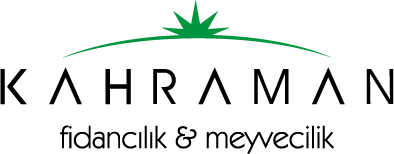Breeder Information
Pear Cultivation
Production Amount; Our country ranks 10th in world pear production with approximately 360,000 tons and 4th in terms of planting area. In recent years, garden establishments with dense planting with seedlings grafted onto clone rootstocks have become widespread in our country.
Soil and Climate Requirements; Due to its wide adaptation ability, pears have found the opportunity to grow in different ecological regions of our country. Pear is a species that is less resistant to cold than apples and has a higher temperature requirement. It does not like heavy, airless, alkaline soils with high lime content. Deep, organic matter-rich, permeable soils should be preferred. The total cooling requirement of pears below 7.2 ºC is between 800-2100 hours depending on the variety. Early varieties with low cooling needs should be grown in the 300-800 m altitude areas of the Aegean and Mediterranean regions, while other varieties should be grown in transition and inland regions.
Use of Rootstock; With the use of dwarf and semi-dwarf clone rootstocks such as BA -29, OHF-333, MC, Quince-A, Sydo, Farold 40, Farold 69 and Pyro-Dwarf developed in recent years, dense planting pear cultivation has become widespread in lands with different soil and ecological structures. In the selection of the rootstock to be used and the variety to be grown, the soil analysis data of the land and the climate data of that region should be taken into consideration. It is possible to establish gardens at 4×1.2m and 4×1.5m intervals and distances on dwarf rootstocks, 5×2.5-5x3m on semi-dwarf rootstocks, 6×6m on pear seedlings, and 4×3m on quince seedlings.
Important Varieties and Variety Selection; Akça, Etruska, June Beauty, Santa Maria, Williams, Kiefer, Abate Fetel, Comice, Conference, Beurre Hardy, Passe Cressane, Ankara and Deveci are important pear varieties.
It is necessary to keep a certain amount of early, autumn and winter varieties in the garden establishment and to take into account the winter cooling needs of the varieties. Due to the incompatibility of pear varieties with themselves, it is mandatory to plant 10-15% of the seedlings of the pollinator variety.
Training System; Peak branch, modified leader, cord training systems are used in pear cultivation. With the use of wire support system and cord training system with 4-4.5m distances between rows and 1.2-1.5m distances on rows on semi-dwarf rootstocks, dense planting garden establishments are made as in apples.
Diseases and Pests; Fire blight, powdery mildew, breast rust are important pear diseases. Fire blight disease caused by the bacteria Ervinia Amylovor is the most important factor limiting pear cultivation. In regions where this disease is frequently seen, resistant or partially resistant varieties should be preferred, and pear-based rootstocks should be selected instead of quince rootstocks.
Important pear pests are; pear inner worm, pear leafhopper, pear leech and scale insects.
